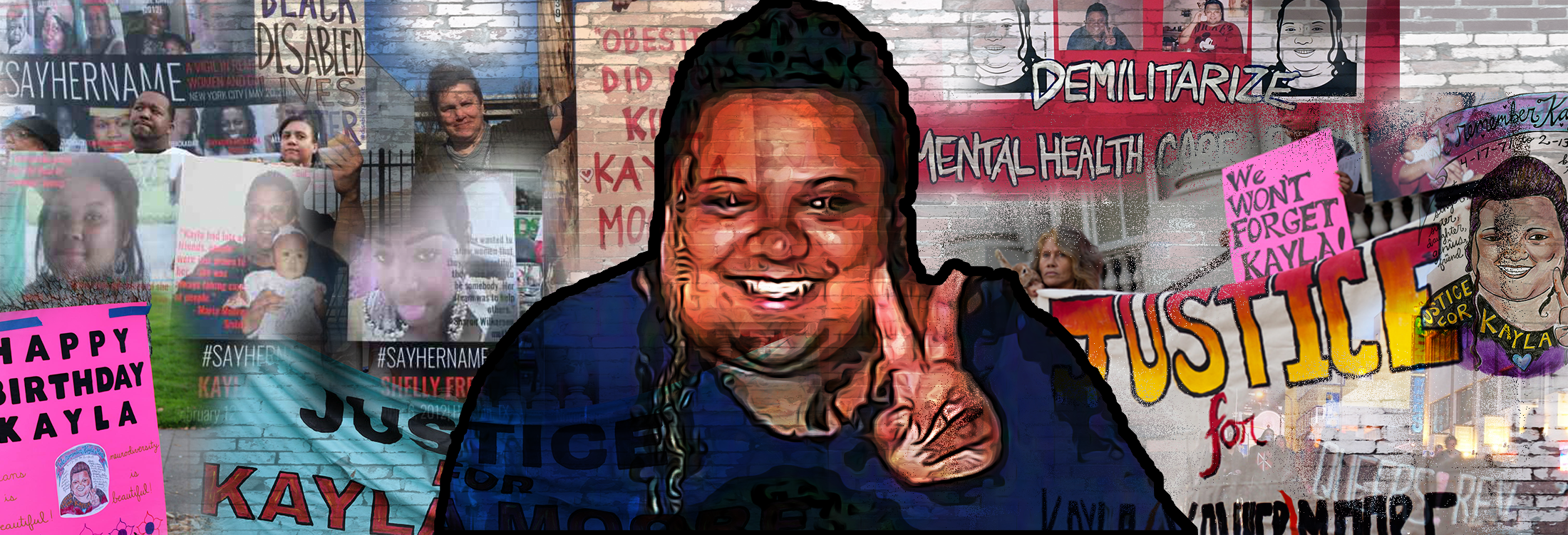
Kayla Moore (1972-2013)
The fact that Kayla Moore was a transgender individual and had been diagnosed with schizophrenia generally were emphasized more than her race in news coverage of the case. But Moore’s death was included as part of the African American Policy Forum’s #SayHerName campaign, paving the way for a greater understanding of how her intersectional identity (as Black, transgender, and a person with mental health issues) placed her at greater rist of police violence.
People frame these incidents according to their vantage points and perspectives. Law enforcement sees this through the lens of appropriate use of force and training. Communities of color see through the lens of excessive force and the long history of police disregarding the humanity of black people. In addition, activists highlighted the often invisible experience of police violence among people of color with mental health issues and/or from the LBGTQ+ community.
Because Police Review Commission’s (PRC) hearings are not open to the public in Berkeley, there is no way of knowing if misconduct charges were brought against the officers who restrained Moore. A Berkeley oversight group called Berkeley Copwatch was not allowed to conduct an investigation until the Berkeley Police Department had concluded their own.
By no means extensive, here are a few examples of how this tragedy was framed, explained, discussed and debated, by officials and by the larger community. In your homes, communities, workplaces, and houses of worship, we invite you to consider how and why fear is so often at the center of interactions between law enforcement and communities of color. What additional perspectives would add clarity to our understanding of this case? What additional frames are useful for thinking about change that will prevent these kinds of incidents in the future?
Digging Deeper
“They didn’t refer to her as a human”: Remembering Kayla Moore - excerpt from interview with Maria Moore, Kayla’s sister. First aired on UpFront on August 5, 2020
Arthur Moore V. City Of Berkeley Wrongful Death suit, filed February 12, 2014
Order-on-Summary-Judgment-in-Moore-v-City-of-Berkeley.pdf - Summary Judgment issued by Judge Charles Breyer, October 14, 2016
Arthur Moore V. City Of Berkeley (9th Cir. 2020) - Appeal filed by Arthur Moore, January 30, 2020
Where White Supremacy and Patriarchy Intersect, #SayHerName - Audio and transcript of Interview with Kimberlé Crenshaw, founder of African American Policy Forum. June 16, 2015
Family & Community Voices
Kayla Moore — Bias Opened The Door - Article reviewing the case, including independent investigation by Berkeley Copwatch, Coalition for a Safe Berkeley, and the Amnesty International chapter at UC Berkeley. Street Spirit, June 9, 2016
Mental Illness is Not a Capital Crime - Article discussing the disproportionate impact of police violence on women of color. Literary Hub, July 31, 2017
International Commission of Inquiry Hearing on the Case of Kayla Moore - February 5, 2021 hearing conducted by Commission, convened by the International Association of Democratic Lawyers (IADL), the National Conference of Black Lawyers (NCBL), and the National Lawyers Guild (NLG).
People’s Investigation: In-Custody Death of Kayla Moore - Report prepared by Berkeley Copwatch, October 2013
Questions to Consider
Where do you potentially see fear being evidenced on both sides? At what junctures do you see the fear structuring or impacting the encounter?
What could have been done differently to minimize this tragic encounter?
What protocol could be put in place to prevent such a tragic encounter in the future?
What expectations should people have of police when making a mental health call?
This case dealt specifically with a person with mental illness. How might people with physical impairments or disabilities face similar challenges in encounters with police? See the following links for examples.
